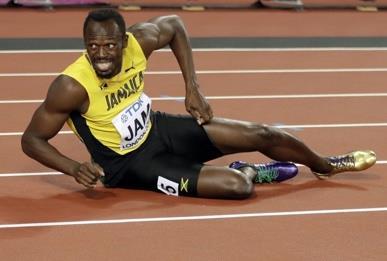
4 minute read
Henrietta Lacks and how unethical is too unethical?
The Psychology of Recovery from Sports Injury
The process of returning to sport after an injury can be stressful, and one that involves both physical and psychological loss. Sportspeople, particularly elite athletes, may experience emotions such as anxiety, tension, low self-esteem, anger, and depression after injury and during their physical rehabilitation. The Emotional Responses of Athletes to Injury Questionnaire (ERAIQ) has shown that an athlete’s mindset seems to relate to their progress in rehabilitation. A pessimistic attitude to injury was shown to lower attendance to rehabilitation sessions and generally increase recovery time. Meanwhile, a positive attitude assisted by techniques such as selftalk, relaxation, goal setting and healing imagery was shown to decrease recovery time.
Returning to competition after injury is a complex process, which includes physiological (rehabilitation or medical treatment) and psychological factors. The first step in recovery is often surgery followed by physiotherapy. However, to return to their sport in prime condition, an athlete must also be able to regain both their technical skills and their psychological confidence. One of the most critical factors in whether an athlete has a successful return is their belief in whether or not they are ready and fully prepared. Researchers have found that returning to competition before an athlete is psychologically ready may lead to anxiety, fear, re-injury, depression, and stress due to a lack of confidence in their physical condition and, consequently, a decrease in performance. This can lead to a vicious cycle of repetitive injury which can unnecessarily shorten a sportsperson’s career and success.
There are many psychological hurdles that athletes must overcome to achieve a positive return to sport. These include a pessimistic outlook (thinking negatively about your situation), an all-or-nothing attitude (being too rigid with your thinking and goal setting), a fear of re-injury, everyday stressors (such as work) which can directly affect body function and hinder your ability to recover, and the stigma associated with discussing mental health issues, often resulting in people not receiving the help they need to come back as quickly as possible.
In 2009, Douglas Glazer developed the Injury-Psychological Readiness to Return to Sport Scale (I-PRRS) to specifically measure the confidence of athletes at different points in their recovery. It highlighted the importance of sportspeople getting the psychological help they need to be fully confident in both their physical and technical ability. This facilitates a successful performance when they return to a competitive environment. The results suggest this may be an effective way to measure when athletes are confident enough in all aspects of recovery to make the return to sport at the right time.
Now that we have considered best practice in psychological recovery from sports injury, our focus must now turn to how it can be achieved. An athlete's coaches and trainers play a crucial role here because they are familiar figures in their lives and a source of reassurance, encouragement, and support. In addition, sports psychologists are an increasingly important source of help as they offer insight, strategies and expertise often not offered by a coach.
One way to build an athlete’s confidence is by using imagery and visualisation. It allows them to mentally run through their specific skills, plays or strategies in their own time during a more inactive part of their rehab session, such as when they are icing at the end. In the case of rugby, a player could visualise, or watch set moves, or even picture themselves successfully playing their part in a move. The same could be done with kicking or passing if relevant to their sport. This can help the athlete to build confidence in their ability and keep a positive mindset about their situation.
12
Sport-specific skills can also be modified to still make them accessible to an injured athlete, even if they are immobilised in some way. This can vastly increase their motivation to return to their sport, as well as gently start to mentally prepare them for when they can return to a competitive environment. For example, a Basketball player suffering from an ACL injury could still work on passing or shooting drills (even if some are modified) while sitting down in a chair. In addition, while their team is training, the injured athlete can watch their teammate who plays a similar position and provide feedback to remain mentally engaged in the sport even though they are not physically participating. This makes their rehabilitation a more enjoyable and interesting process.
It is also recommended that injured athletes incorporate goal setting on a daily and weekly basis for their rehabilitation exercises and their modified sport-specific skills. Goal setting constitutes a crucial part of rehabilitation by setting timelines by which to reach milestones of recovery, such as regaining a degree of mobility in a knee injury. This gives both the coach and physiotherapist evidence of how far the athlete has progressed. However, it also shows the athlete all they have achieved and motivates them to persevere, especially if rewards or positive feedback are given after they reach their goal.

These methods are effective at trying to increase the athlete's confidence and ensure they have a positive attitude towards their rehabilitation. Having a negative mindset can directly affect bodily function and hinder an athlete's ability to recover, therefore increasing the time that they are absent from their sport. An elite athlete will want to return to a competitive environment as quickly as possible but doing so too soon can have negative implications on their performance. If the techniques outlined above are utilised an athlete should be psychologically confident about their physiological state so they can make the transition back into a competitive sporting environment in an optimal, but safe time.
- Leo F (Re)








